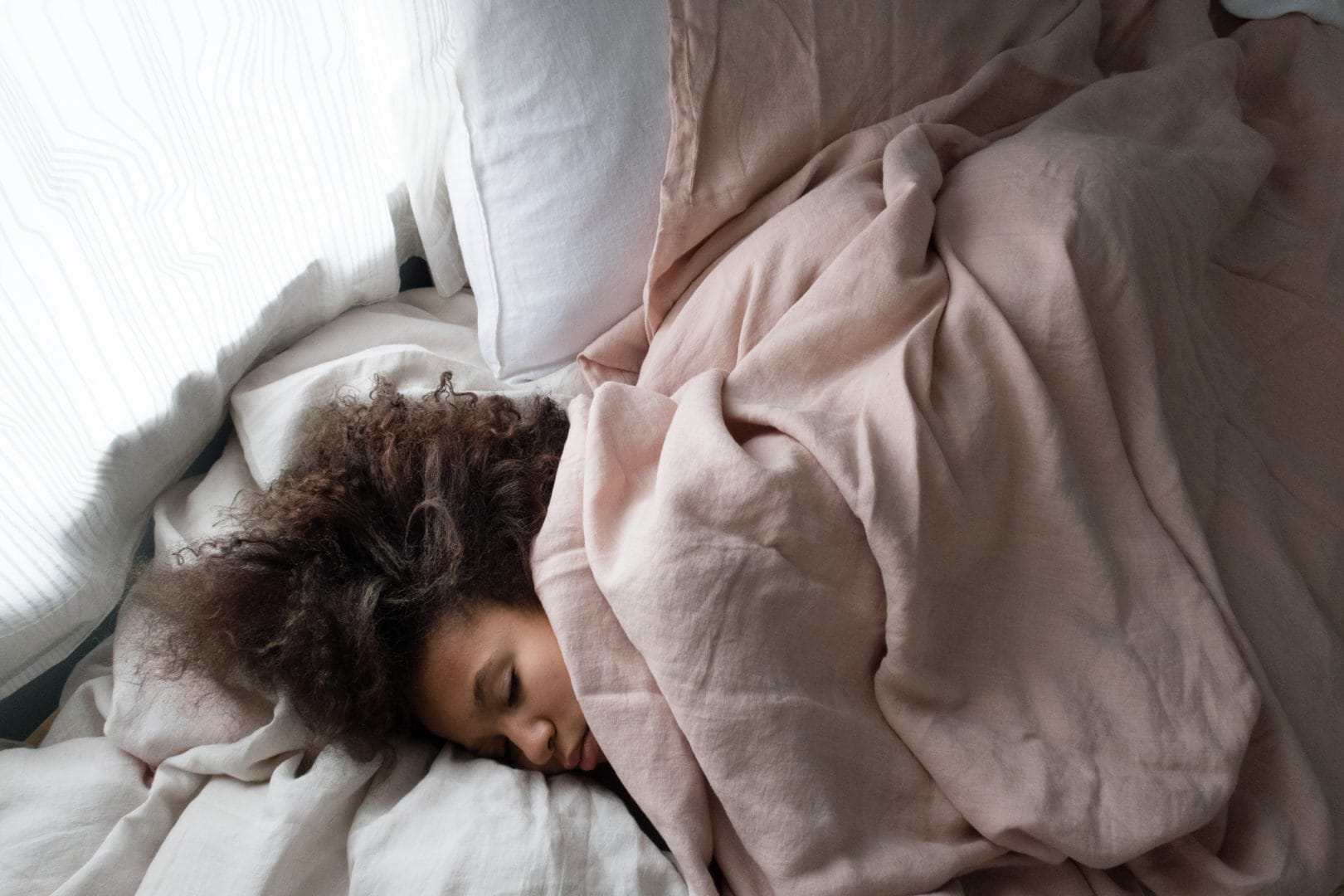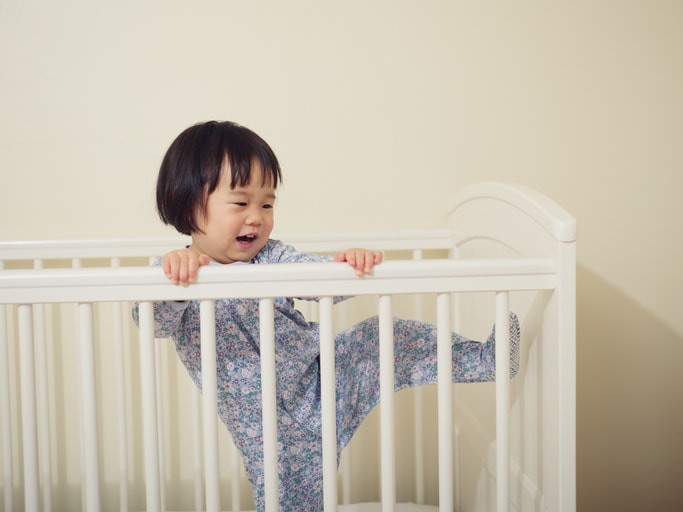Whether you’re calling it distance learning, remote learning or online school, chances are your kid’s school day looks a whole lot different these days than it did before the pandemic. And we’re not just talking about kids learning through Zoom and doing chemistry projects on the kitchen counter — for many kids, learning at home every day or even just a few days of the week means getting a little extra sleep in the morning.
With no bus or carpool to catch and more parents working at home themselves, there may not be a reason to drag kids out of bed to accommodate early school start times. But is it OK to let kids sleep late on a school day? And how late is too late?
What’s a healthy amount of sleep for kids?
First off, a little good news for all those snooze button lovers out there: Kids need sleep. A lot of sleep.
“Sleep is a vital component of normal growth and development and plays a significant role in overall mental health and well-being,” says Ashanti Woods, a pediatrician at Mercy Medical Center in Baltimore.
Just how much sleep a child needs depends on their age, but Woods says it can run the gamut from nine hours for some kids, 10 to 11 hours of sleep for another to constitute what he calls “sufficient rest.” That number can climb even higher for young learners, as the American Academy of Sleep Medicine suggests as many as 10 to 13 hours of sleep a day for preschool and kindergartners.
To put those numbers in perspective: If a child needs to be up by 6 a.m. to change out of their PJs, eat a healthy breakfast and maybe enjoy some snuggle time before school, that would mean having a bedtime as early as 5 p.m. the night before for some kids to get the recommended amount of sleep for their age. That juggle can be daunting — especially for working parents who don’t even leave the office until 5 p.m. (or later) and for parents trying to fit in after-school activities, kindergarten homework and, of course, dinner and bathtime.
But here’s the good news. If a child doesn’t have to be on Zoom until 8 a.m. for a lesson with their teacher, Woods says there’s no reason to make them rise at the 6 o’clock hour that used to be necessary when they had to catch an early morning bus. He does add, however, that it’s a good idea to ensure kids do have a good half-hour to hour for their morning routine before their actual class.
In other words, a child with an 8:30 a.m. Zoom class shouldn’t be rolling out of bed at 8:25. Instead, Woods says, they should have enough time to wake, brush their teeth, eat breakfast and at least dress their top half to be ready to tackle the day.
Are there benefits to later start times?
Convenience may be one reason parents opt to let their kids sleep later while they’re distance learning; however, there are actual benefits to this practice as well. In fact, studies have long shown that lack of sleep can affect kids’ cognitive function and their behavior both.
Ever spent a day in a complete funk after a night of tossing and turning? Kids feel the same negative effects when they lose out on important hours in bed. For New Jersey mom Laura L., remote schooling has given her the chance to let her 9-year-old twins sleep in, and not being a “drill sergeant with their sleeping” has made for much more pleasant mornings for the whole family.
“There is no fighting in the morning,” she says. “I can wake up, drink my coffee in peace, and they are usually bright and ready to start the day.”
Learning fully remote, the boys typically snooze until 8 a.m. before tackling their schoolwork. If they want to sleep a little bit later, Laura allows that too — within reason.
“This is a hard time for everyone. I believe everyone needs to be given a little grace during uncertain times,” she says. “They aren’t sleeping until 11-12. If they were, my opinion might change a little.”
Laura has science on her side in this. Experts from the American Academy of Pediatrics (AAP) and the CDC have been warning for decades that school start times are often too early — especially for adolescents who are battling biological clocks that keep them awake later and make rolling out of bed early extra hard.
In a landmark announcement in 2014, the AAP advocated for schools to push start times to 8:30 a.m. to “improve physical (e.g., reduced obesity risk) and mental (e.g., lower rates of depression) health, safety (e.g., drowsy driving crashes), academic performance and quality of life.” But a year later, when the CDC published a review of actual school start times, 42 states reported schools 75-100% of their schools were starting earlier than the AAP’s advocated morning bell — much earlier.
Mom Jenn VandeZande says that before the pandemic, her 15-year-old daughter Abrielle used to leave the house by 6:45 a.m. and not get home until nearly 5 p.m. at night. But that didn’t mean time to decompress. The sophomore at Saginaw Arts & Sciences Academy would then have hours of homework ahead of her, complete with sobbing and fighting. Since the Saginaw school opted for a hybrid school model, Abrielle is able to catch up on her sleep, and VandeZande is already seeing the benefits.
“We’ve personally seen a great improvement in her grades and participation/excitement about classes since going hybrid — I think this has to do with both lessened pressures of being in school all day, then having hours of homework to manage each night, as well as lessened social pressures that go along with simply being a high schooler,” VandeZande says. “I do hope that a positive outcome of this pandemic will be rethinking homework and the demands we place on kids during their formative years. When each moment of the day is filled with requirements and scheduled activities, there isn’t time to simply be alone, think, create … or dream. Sleep is essential!”
Can a child sleep too much?
While there are myriad benefits to letting kids get extra sleep, there can be too much of a good thing. Excessive sleep — more than the amount of time needed for their age — can be a sign of depression, even in kids, and should be discussed with their pediatrician.
What’s more, even if your kids are getting the right amount of sleep, the consistency of their sleep routine is important too.
Dawn Hauschild, an elementary teacher in upstate New York, is teaching a hybrid model this year — kids spend two days in her classroom and three learning from home. The educator of more than 20 years says sleep is important for brain function and can help increase attention, especially with increased time in front of the computer.
But, she warns, “they should not be staying up all hours of the night.”
It’s important that kids are awake in time to attend any classes or Zoom meetings with their teachers, Hauschild notes, and that they stick to some sort of schedule so they’re not waking at odd hours.
Woods advocates a similar setup: Create a sleep routine that allows the child more time in bed in the morning but a consistency in waking times.
“Routine will be very important in keeping children productive and making the most out of virtual learning,” Woods explains. “Weekends are OK to sleep a little longer than usual but should not deviate more than two hours from normal.”
How to switch back to “normal” school
The future may be uncertain, but already some districts that have announced plans to return to in-person schooling. With that comes a return to early start times.
If your district has announced a plan to bring kids back into the building, you may need to help your kids adjust back to an earlier waking time too.
Woods suggests giving kids two full weeks to acclimate to the earlier time. If possible, that means slowly adjusting their morning wake-up over those two weeks before they actually have to get up early for that bus, drive or walk back to the building.



